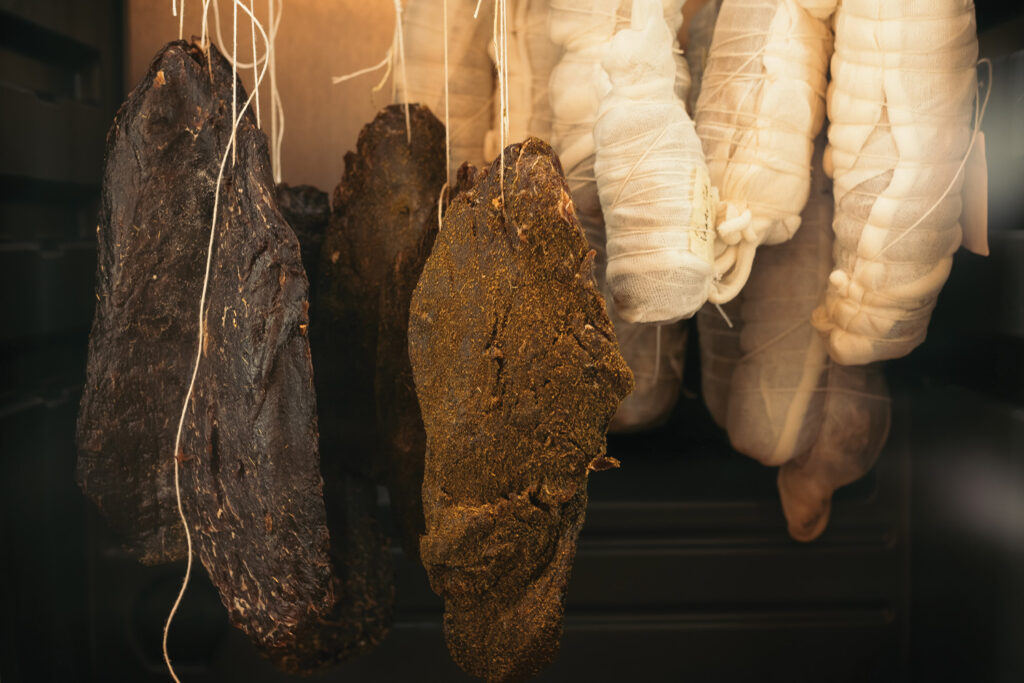As the sun drops ever lower against the pink limestone buildings that frame the port, and the cerulean-hued sea glints, it’s time to eat. France’s new darling of gastronomy is brimming with options.
Marseille has never been one of the great Mediterranean destinations that tumbles readily off of tourists’ tongues. It’s not Capri and certainly not Saint-Tropez or Monaco. Marseille suffers from hellacious traffic and frequent garbage strikes, yet there has been a growing hum of tourism centred around this unlikely, and some would attest unlikable, city. And many of these visitors are coming to Marseille for the food.
“Marseille was the dirty city. We were not very sexy for the rest of France or the rest of Europe,” said food and wine journalist for La Provence, Guénaël Lemouée. “Gastronomy was one of the main assets of this city to change its image.” The food landscape in Marseille has always been distinct because of the city’s cultural and historical foundations. First settled by Phonecian sailors, France’s second-largest city is also the country’s oldest. Its port was the gateway to France’s colonies in Africa and Asia. Waves of migrants have layered its culture and shaped its essence. Corsican, North African, Arab, Italian, and Armenian populations all lay claim to this city, as do many white, French, working-class people.
“Marseille is a city of contrasts,” said Alexis Steinman, of food tour operator Culinary Backstreets. “I’m taking [guests] to places they would never walk in, that looks really sketchy, but serve these amazing hot pastries. The trick is, come here and know what you’re getting yourself into. If you come here thinking you’re getting Provence, you’d be mistaken.”

La Relève: photographed by Nathalie Mohadjer.
When did Marseille first start to spark? Many residents point to the city being named the European Capital of Culture in 2013, when tens of millions of euros were poured into city projects. The space was an urban sprawl of Michelin-star dining, 100-year-old couscous restaurants, and casual cafes or pizzerias. But until roughly the last decade, there was not much else on the culinary forefront, Lemouée explains. As more young chefs who had left for work elsewhere in France and abroad returned home, there was a groundswell of new bar and restaurant openings. And this in turn attracted attention and more food creativity.
Marseille native Greg Hessmann has observed much change in the decade since he and his business partners opened the restaurant La Relève. For him, the food has always been central, as has been having a place to gather with friends. “It’s a very short menu, always fresh, organic, and from the day,” he said. “We know the butcher, we know the cheese seller, we know who made the food from the beginning to the end. We grew up like that, and it follows us here.” La Relève has been busy since opening, and has now expanded to house overnight guests.
“Marseille is the cradle of the various nationalities of France. The different populations brought recipes back in their luggage,” said development director of restaurant Chez Yassine Imen Kadidi. “This is becoming a strength for the culinary landscape.” And it is increasingly in those gritty, graffiti-adorned, traditionally immigrant neighbourhoods where some of the best food in the city is taking root. The Noailles district comprises cobbled alleys densely packed with food stalls and shops selling everything from spices to yards of fabric. Chez Yassine, is a staple of the neighbourhood, offering up queue-worthy Tunisian street food such as roasted chickpea–based leblebi.
Noailles hosts a daily market for produce vendors, and in 2016, renowned food journalist Julia Sammut opened her much-loved gourmet shop Épicerie L’Idéal. The infamous steep steps from Cours Julien towards Noailles is where Swiss chef Lilian Gadola chose to open her fish-oriented bistro, Limmat. “It’s really important to note that a lot of what’s happening in Marseille is because of women,” said Steinman. “That’s really big for a city that is known as being macho.”

Cécile: photographed by Florian Lalanne.
Cécile Food Club is a relative newcomer on the Marseille dining scene, opening only last year, but already it is attracting long lineups. Like the well- known restaurant and hotel Tuba Club, this is a creative project run by locals drawing on their years working abroad. Cécile is a deli that, unusually for eateries in the city, is open all day, seven days a week. Patrons might drop in for a broccoli, feta, and mint salad, or some Japanese cold soba, or perhaps take a ham and butter sandwich and some wine to eat by the water. Their cookie is addictive. “When we opened Cécile, we didn’t want any barriers,” said Marseillais co-owner Barthelemy Tassy, explaining the diversity of their food. Again, he echoes the sentiment that locals want and expect good hospitality. “People want to see their city evolve, but they don’t want the city or the food scene to go someplace cold and impersonal.”
Another agent of change for Marseille was the COVID-19 pandemic. It transformed the city, with many Parisians buying second homes or moving there altogether. But as rooftop bars proliferate, rents rise, and locals worry about gentrification, it is worth noting that there have been various restaurant offshoots from elsewhere that have failed to thrive. “You love Marseille, you hate Marseille,” said Steinman. “Marseille is not a city for everybody.”

